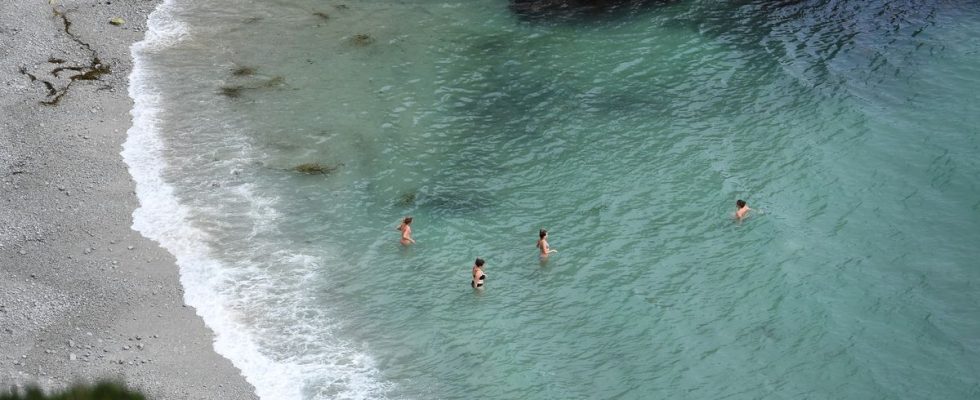He was alone, seated in the small courtroom of the Rennes administrative court. Spokesperson for Eau et rivières de Bretagne, Arnaud Clugery does not hesitate to speak of a real “health scandal” when he addresses the dispute between his association and the Regional Health Agency. After having examined very closely the methodology of the ARS, his association accuses the public administration of manipulating the classifications of bathing waters in Brittany by “dismissing certain bad results”. While waiting for its complaint to be studied by the European Commission, the association was able to count on the support of the public rapporteur who pleaded in its favor on Tuesday, denouncing the errors committed by the ARS, curiously absent from the hearing. Often followed by the magistrates of the administrative court, this opinion could set a precedent and push the French authorities to clarify their sampling methods. Above all, it discredits an institution supposed to protect populations.
At the dawn of the 2022 tourist season, Brittany displayed its figures with pride. “Of the 581 controlled and classified swimming pools in Brittany in 2021, 98.5% have water that meets the quality requirements in force”, boasted the ARS. Only nine sites in Finistère and Côtes-d’Armor were classified as insufficient quality. The reality of the agribusiness region would in fact be quite different. According to the work carried out by Water and Rivers of Brittany, around fifty beaches should however be prohibited for swimming due to water pollution. The reason ? A manipulation of statements strangely operated by the authority in charge of the file.
Very supervised by the European Union, the monitoring of bathing waters allows a significant sprain by authorizing the authorities to withdraw bad readings when they are the consequence of a specific episode. The origin of the pollution must then be clearly identified and a curative solution must be found. Let’s take the example of a wastewater treatment plant that has malfunctioned. In order not to weigh down the results of a slot for an event processed in a few hours or a few days, the ARS may decide to remove this “bad result”. The problem is that the Regional Health Agency seems to abuse this privilege by considering that the ugly results obtained after heavy rains can be considered exceptional. Except that the rain in Brittany, it is not exceptional. And when it comes to fall into watersheds known to be contaminated by phytosanitary products and intensive farming, it carries with it a significant amount of shit to take it to the sea. “The ARS considers that the runoff is an exceptional pollution. But it’s wrong. We have to get out of this system which makes pollution invisible,” says Arnaud Clugery.
Regular preventive closures
In Brittany, preventive measures to close beaches are regularly adopted during periods of heavy rain. Local authorities know that a big storm will pollute coastal waters by washing agricultural land and roads, sometimes overflowing the networks. Should these readings be removed to distort the ranking of the best bathing areas? “We have beaches that are regularly subject to preventive closures and that show better results than others that are never affected. The bather must be able to know, his health is at stake”.
In a long analysis of the situation, the public rapporteur had already underlined the strangeness of certain results communicated by the ARS, taking the example of the Château beach, in Landunvez. Known for being home to 12,000 pigs and 1,500 inhabitants, the town of Finistère Nord should see its beach reopen this summer, on the basis of convincing water quality results. But are they reliable? “The ARS acknowledged that it had included 15 so-called positive results by mistake out of a total of 19,000. It doesn’t seem like much, but it should be noted that two concern the Château beach alone, ”noted Dominique Rémy. The public rapporteur recalled the difficulty of regaining the trust of a population that has been deceived for too long. The latter pleaded for the ARS to integrate all the results of the samples taken and discard those that do not need to be there. In order to see more clearly before going into the water.
How many other ARS concerned?
Under advisement, the decision of the administrative tribunal will be scrutinized closely when it is made public within a fortnight to a month. “We are not trying to harm the ARS, tourism or certain municipalities. We simply want the method to be reviewed so that it is reliable. Thus, we can work to identify the areas and work to put an end to the pollution of which the populations are victims, ”concludes the spokesperson for Water and Rivers. A complaint to the European Commission could also lead to a harmonization of methods at national or even European level. Because to hear the environmental associations, the Breton ARS would not be the only one to use this same process.

